Projectile with Orbital ATK / Northrop Grumman Mk 310 PABM-T Programmable Fuse (USA)
According to well-known data, the American company Orbital ATK (now joined the organization Northrop Grumman Innovation Systems) took up the theme of programmable fuses almost in the late nineties, and soon presented the first projects of this kind. Since the end of the last decade, the most active work has been carried out on the subject of air-assisted artillery ammunition. The result of this work was the emergence and subsequent adoption by the US and other countries of the Mk 310 projectile. Then, based on it, several other products of similar purpose were developed.

Artillery shot Mk 310 PABM-T. Photo by Northrop Grumman / northropgrumman.com
The Mk 310 PABM-T projectile (Programmable Airburst Munition with Tracer - “Programmable Air Explosive Ammunition with Tracer”) is designed for existing automatic guns of the Mk 44 Bushmaster II and XM813 of caliber 30 mm, created in Orbital ATK. Also does not exclude the possibility of using this projectile in the creation of promising tools. A unitary shot with a Mk 310 projectile is no different from existing shots such as 30x173 mm, but the gun needs some new devices to use it.
The shot of the Mk 310 PABM-T has a total length of 290 mm, of which 173 mm falls on an aluminum sleeve. The shell is slightly shorter than the liner. The mass of the shot as a whole - 713 g, projectile - 424 g. The propellant charge is made in the form of 140 g powder. The projectile has a traditional form for such ammunition, but it is distinguished by the presence of a tail tube-tracer body. Bottle-type liner with non-protruding rim is used. In the bottom of the sleeve is located primer type M36A2, triggered by a blow.
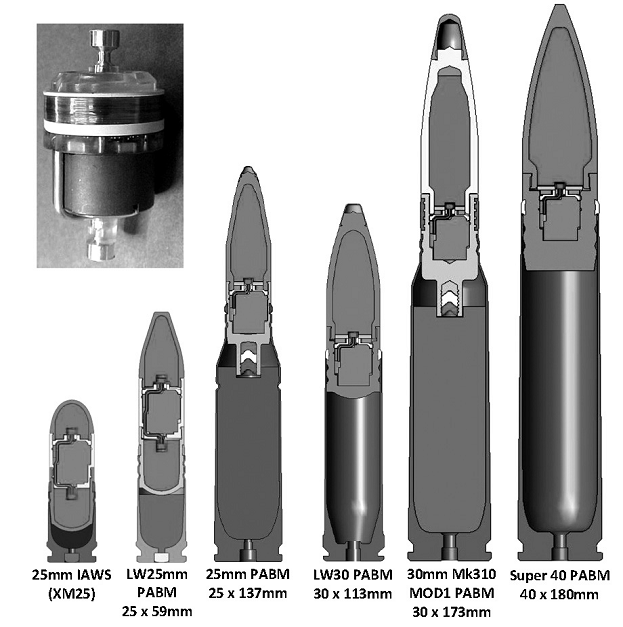
Orbital ATK / Northrop Grumman ammunition family unified by fuse (top left). Photo Btvt.info
The projectile itself, with a programmable fuse, is a traditional-look 30-mm product, but it has an unusual design. The pointed and rounded head of the projectile is formed by a ballistic cap. Behind it is the main body with an explosive charge, which occupies about half the total length of the projectile. Inside the case there are notches that facilitate its separation into striking elements during exploding. The mass of explosive in the projectile was not specified.
The rear of the Mk 310 projectile is reserved for the placement of special systems that give it special capabilities. Inside the cylindrical housing with transverse grooves, the electronics unit and the battery are successively placed. Under the cylindrical side wall of the electronics unit, engineers positioned a receiving induction coil for receiving data from the fire control system. On the shells on display, the body section under which the coil is located was indicated by a red stripe.
At the bottom of the battery case there is a tube with a tracer charge, which is ignited when fired. The developer indicates that the minimum time of the tracer is 2 seconds. In practice, however, the charge burned to 5-6 seconds, as a result of which, in later documents, the minimum burning time was increased. Anyway, the tracer provides firing in the entire range of working range of the projectile and compatible guns.
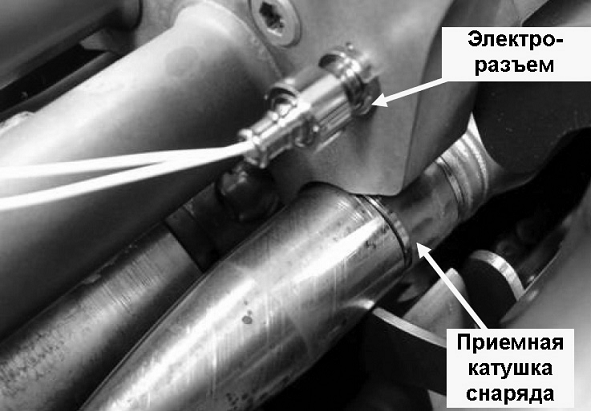
Programmer to work with fuses, mounted on a gun. Photo Btvt.info
When used with the Bushmaster II Mk 44 cannon, the Mk 310 PABM-T type projectile shows characteristics at the level of other ammunition. The propellant charge creates pressure at the level of 423 MPa in the barrel channel and accelerates the projectile to 970 m / s. The effective range of fire - not less than 3 km. In terms of accuracy and accuracy, a projectile with a programmable detonation does not differ from other ammunition such as 30x173 mm.
***
The main feature of the Mk 310 PABM-T product is its fuse based on electronic components. Specialists Orbital ATK had previously developed a universal programmable fuse suitable for use in various artillery munitions. Products of a number of basic classes are offered, from grenades for 25-mm grenade launchers to unitary shots of caliber 50 mm. In all cases the same fuse is used.
Depending on the type of ammunition, the fuse can be placed in the head, center or bottom of the projectile. Its cylindrical body with a diameter of 25 mm may be part of the body of the projectile or be inside the latter. In the case of 30-mm ammunition, a universal fuse is placed inside the main body, behind the warhead.
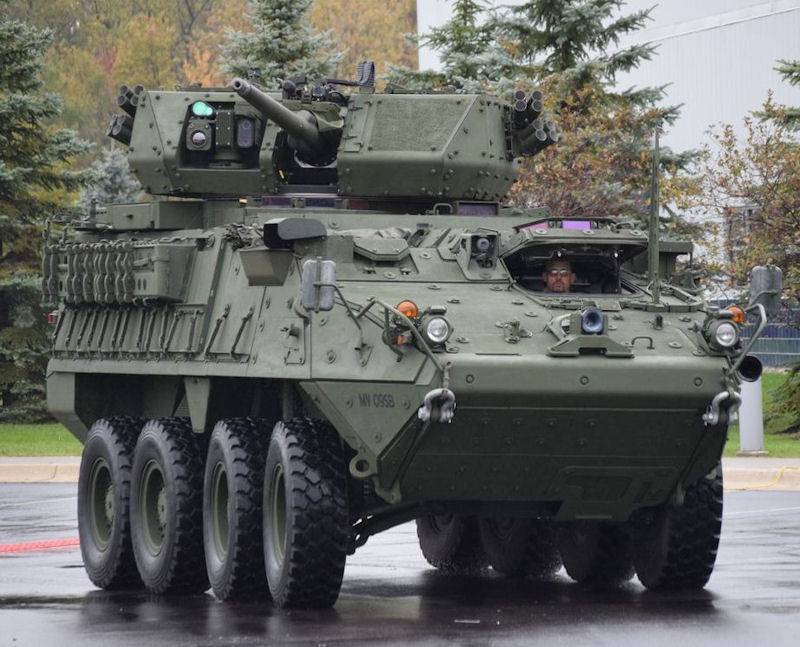
Experienced XM1296 armored personnel carrier with a combat module compatible with Mk 310 shots. Photo Globalsecurity.org
The principle of operation of the universal fuse from Orbital ATK is quite simple; the same ideas apply to other prospective ammunition projects. During the preparation for the shot, just before the projectile is fed into the barrel, a special programmer through the receiving coil enters data into the fuse electronics, namely, the range at which the main charge should be exploded. Under the action of rifling barrels, the projectile rotates around its longitudinal axis when fired and in flight. Its electronics counts the number of revolutions, and after a specified number of them carries out undermining.
However, the manufacturer does not exclude the possibility of another use of projectiles with programmable fuses. A universal fuse can also be triggered by contact with a target or with a specified delay after colliding with it. Thus, the Mk 310 projectile or standardized ammunition can solve different firing tasks, replacing traditional systems without new capabilities.
***
In terms of dimensions and internal ballistics, the Mk 310 PABM-T perspective shot is no different from other 30x173 mm shots. At the same time, for its full use of the automatic gun needs some modifications. For the full-fledged use of programmable fuses, a whole range of electronic tools are offered for installation on combat armored vehicles with compatible guns.
A new unit is integrated into the standard fire control system that is responsible for generating data for the fuse. He must receive all the necessary data from other components of the SLA and determine the number of revolutions of the projectile corresponding to a given range. For direct data transfer to the fuse, a special electromagnetic programmer is offered. This device is mounted directly on the gun, in the path of supply of ammunition. After installing these devices, the armored vehicle can take full advantage of projectiles with air explosions.
According to known data, the complex in the form of an 30-mm automatic cannon, an SLA and a Mk 310 projectile is capable of solving a whole range of combat tasks with the choice of the optimum mode of operation. So, undermining the projectile in contact with the target allows you to attack various objects, including buildings and equipment. The detonation of a projectile with retardation is intended to combat protected combat vehicles or fortified structures. Air blasting allows you to destroy manpower and other targets behind cover.
Of particular interest is another mode built on the basis of an air blast. It provides for firing a burst with different settings of fuses, due to which several shells, while at a certain distance from each other, explode simultaneously. This mode of operation of the SLA is intended for firing at enemy positions from the flank, for attacking convoys along their direction of movement, etc.
***
Testing and development of the promising projectile Mk 310 of the first Mod 0 modification was carried out from the end of the XNUMXs and ended at the beginning of the current decade. Then came a few curious News. The PABM-T product completely suited the American military, and therefore was adopted. A modernization program for existing armored combat vehicles with 30 mm automatic guns was also launched. Within its framework, it was planned to equip the armored vehicles of the army with new devices that ensure the use of programmable fuses.
Later, in the middle of 2014, the first export contract for the supply of Mk 310 shells and auxiliary equipment became known. The first foreign customer of these Orbital ATK products was the Belgian army. She planned to upgrade her MOWAG Piranha IIIC infantry wheeled combat vehicles: this technique carries a twin turret with an 30-mm Mk 44 cannon. The emergence of new instruments and shells should have a positive impact on the combat capabilities of the BMP.
In the future, there were new reports on, at a minimum, negotiations on the future supply of projectiles and the necessary equipment. The Mk 310 PABM-T shots are of interest to the overseas military and are now quite popular in the international market. Several factors contribute to this success. Not the last role is played by the distribution of Bushmaster II cannons, as well as the absence of the need for their cardinal alteration for the use of new projectiles. In fact, the customer can get new combat capabilities with limited spending.
Wanting to maintain its position in the market, Northrop Grumman offers customers a new XM813 cannon, created on the basis of the Mk 44 and also capable of using the Mk 310 projectiles.
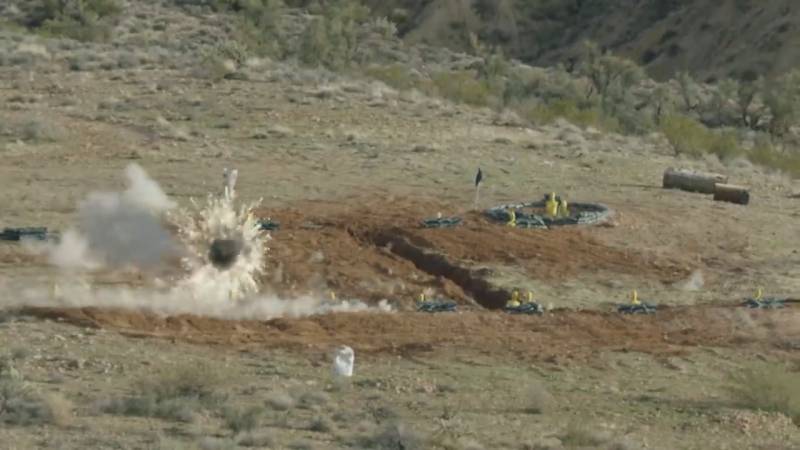
Shelling of conditional manpower in a trench. The rupture of the projectile is visible, behind it is the smoke from previous explosions. Photo by Northrop Grumman
Within the Bushmaster family, new 40 caliber guns are being developed, some of which have maximum unification with 30-mm specimens. Moreover, a quick reorganization of the 30 mm caliber cannon into an 40-mm gun and vice versa is provided by replacing just a few units. In view of these ways of developing artillery, Orbital ATK / Northrop Grumman developed a new shot, known as Super 40 PABM.
The Super 40 product (40х180 mm) is a unitary shot with a larger caliber projectile equipped with a universal programmable fuse. The increase in caliber should affect all the main characteristics and give advantages over 30-mm ammunition. The Super 40 project has already reached the testing stage. In addition, the company-developer has already demonstrated new shells and guns in action.
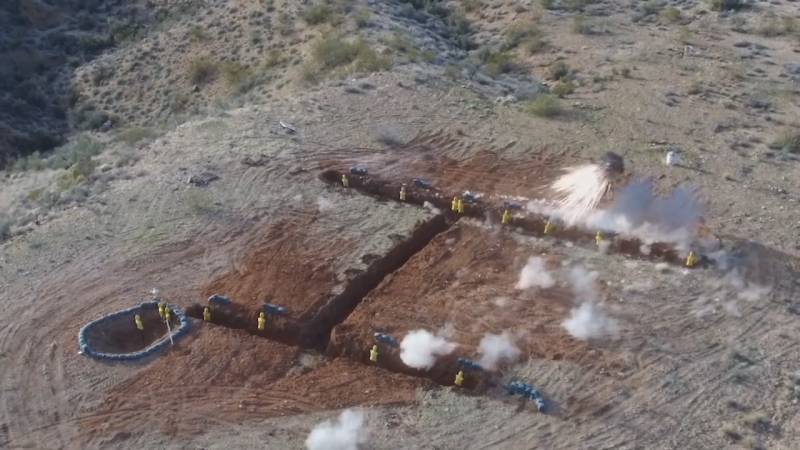
The shelling of the trenches: the moment of the explosion of the projectile. Photo by Northrop Grumman
At the beginning of 2017, a scientific and practical conference was held on the development of the Bushmaster cannon family. The event was attended by a Stryker armored personnel carrier with a Kongsberg MCT-30 combat module, equipped with a Mk 44 cannon. After a demonstration firing 30-mm shells with a display of all the possibilities, the gun was rebuilt to the caliber 40 mm, which took about an hour. The armored personnel carrier then fired 40-mm projectiles, including Super 40.
As far as we know, the new projectile of increased caliber has not yet coped with all the necessary tests and is not yet ready for commissioning. However, the tests are coming to an end, and in the near future, the command may decide on setting the projectile into service.
***
One of the main ways for the development of small-caliber artillery is currently the creation of new projectiles with programmable fuses, providing the possibility of undermining at a given point of the trajectory. Such shells are being developed in different countries, and some samples of this kind have already been put into service. Typical representatives of this class are Mk 310 and Super 40 products of American design.
In terms of basic features, operating principles and capabilities, the products from Orbital ATK / Northrop Grumman are little different from other projectiles with programmable fuses. In this case, the American project has an important feature, which, with the right approach, can be an advantage. The Mk 310 and Super 40 products, as well as a number of other ammunition, use a unified, programmable fuse that is compatible with a universal programmer. All this allows us to simplify the mass production of ammunition of various types, and at the same time reduce the cost of mass-produced items.
The Mk 310 PABM-T projectile can be considered very successful, in favor of which contracts for the supply of ammunition and updated guns to a number of armies say. However, the development of projectiles with programmable fuses continues, and new samples appear on the market. In this regard, in the near future the development of the company Orbital ATK / Northrop Grumman will have to face serious competition. Whether she will be able to maintain her position in the market and cope with her competitors will become clear later.
On the materials of the sites:
http://northropgrumman.com/
https://janes.com/
http://btvt.info/
https://alternatewars.com/
https://armyrecognition.com/
https://globalsecurity.org/
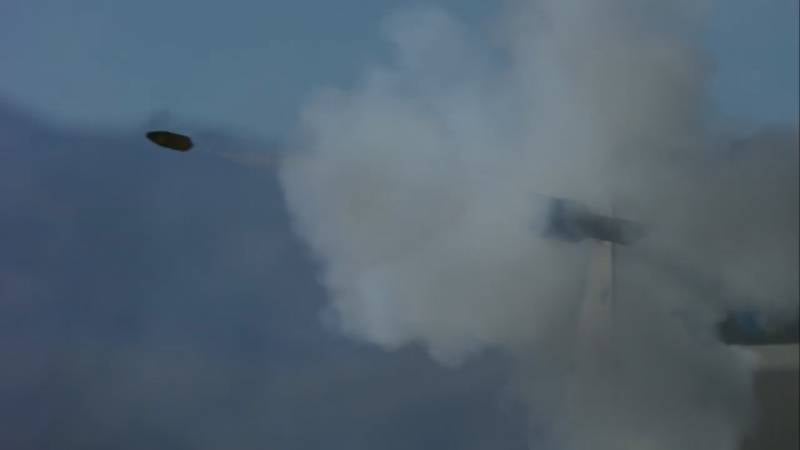
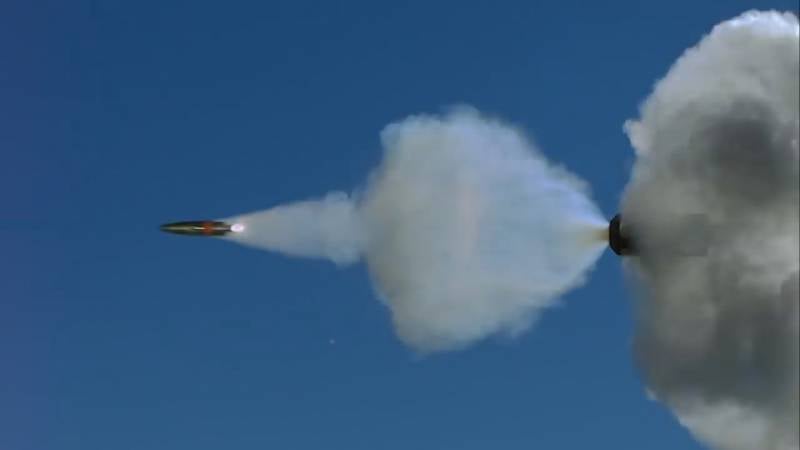
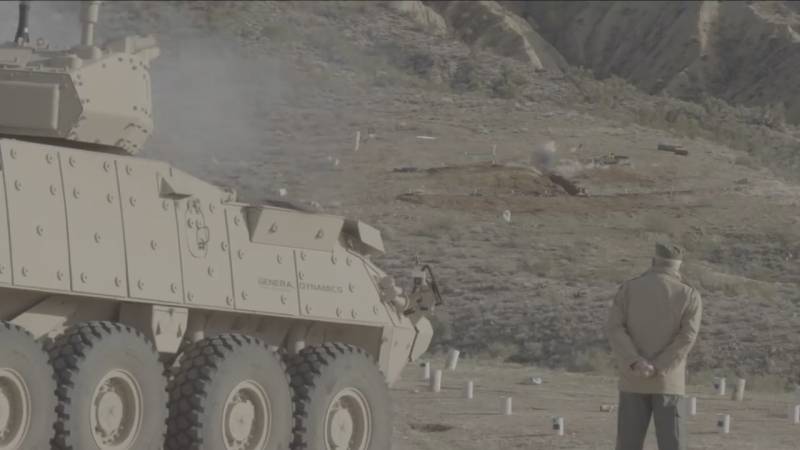
Information